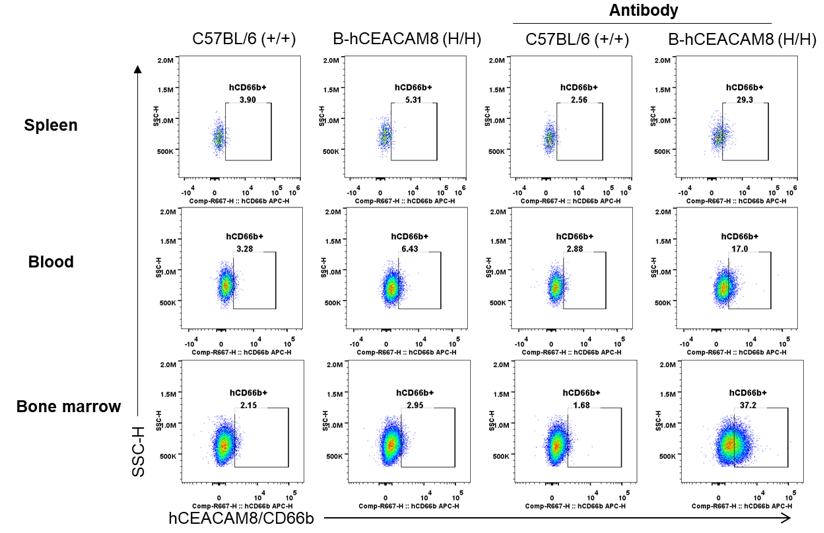Description
- CD66b is a 95-100 kD glycosylphosphatidylinositol (GPI)-linked protein also known as CD67, CGM6, and NCA-95. CD66b is a member of the immunoglobulin superfamily, carcinoembryonic antigen (CEA)-like subfamily. CD66b, expressed on granulocytes, has been reported to induce activation in neutrophils and to be involved in heterophilic adhesion with CD66c.
- The full coding sequences of human CEACAM8 gene, including the promoter, 5’UTR and 3’UTR are inserted into mouse Hipp11 (H11) locus in B-hCEACAM8 mice.
- Human CEACAM8/CD66b was detectable on neutrophils from spleen, blood and bone marrow of B-hCEACAM8 mice.
- B-hCEACAM8 mice can be used to study the in vivo efficacy and safety evaluation of CEACAM8 antibody drugs.
Targeting strategy
Gene targeting strategy for B-hCEACAM8 mice. The full coding sequences, promoter, 5’UTR and 3’UTR of human CEACAM8 gene are inserted into mouse Hipp11 (H11) locus in B-hCEACAM8 mice.
Protein expression analysis
Strain specific CEACAM8 expression analysis in homozygous B-hCEACAM8 mice by flow cytometry. Spleen, blood and bone marrow were collected from wild-type C57BL/6 mice (+/+) and homozygous B-hCEACAM8 mice (H/H) and analyzed by flow cytometry with species-specific anti-human CD66b Antibody (Biolegend, 396906). Human CEACAM8/CD66b was detectable on neutrophils from spleen, blood and bone marrow of B-hCEACAM8 mice.
* When publishing results obtained using this animal model, please acknowledge the source as follows: The animal model [B-hCEACAM8 mice] (Cat# 112832) was purchased from Biocytogen.

